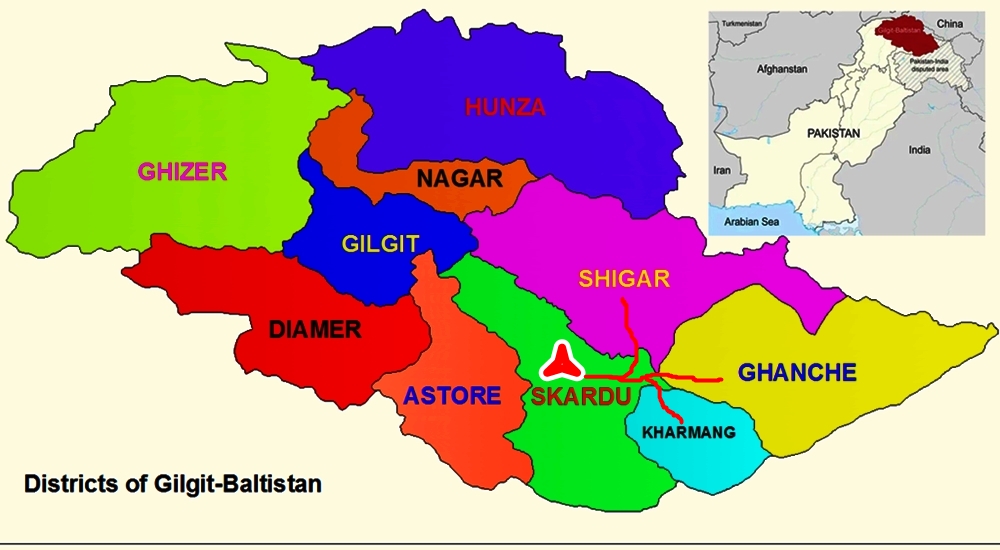British Cemetery in Gilgit: A Testament to Colonial Legacy
Nestled in the breathtaking landscapes of Gilgit, the capital of Gilgit-Baltistan, the British Cemetery, also known as G.W. Hayward Cemetery, stands as a poignant reminder of the region’s colonial past. This serene burial ground not only reflects the legacy of the British Raj’s presence in the Gilgit Agency during the 19th and 20th centuries but also offers visitors a glimpse into the historical and cultural tapestry of the era.
Commemorating George W. Hayward
The British Cemetery was initially named “Hayward’s Garden” in honor of George W. Hayward, a distinguished British explorer. On July 18, 1870, Hayward became the cemetery’s first internee after being tragically assassinated near Darkot Pass in Ghizer. The Royal Geographical Society of London established his burial site, marked with an inscription commemorating his gallantry and achievements. Hayward’s legacy as an intrepid traveler exploring the Pamir grasslands is immortalized here.
Architectural Highlights
Encircled by a robust stone wall and featuring ornate wrought iron gates, the British Cemetery Gilgit showcases the architectural finesse of the Victorian era. The grave markers, crafted predominantly from stone, are adorned with delicate engravings and intricate designs, making them artistic marvels in their own right.
A Historical Landmark Along the Silk Road
Situated along the historic Silk Road, Gilgit was a pivotal hub for trade and administration during the British colonial era. The cemetery was established as a final resting place for British officials, soldiers, travelers, and locals who collaborated with the British in various capacities. Each grave tells a story of courage, exploration, and the intertwined destinies of British and local communities.
Notable Figures Buried in the Cemetery
The cemetery is home to at least 18 graves of notable individuals who played significant roles during the British era, including:
- Captain G.W. Hayward: The cemetery’s first occupant, renowned for his exploration of Central Asia.
- Major William Brown: A prominent figure in the development of the Gilgit Agency.
- Arthur Francis Bruce: The political agent of Gilgit from 1906 to 1908.
- Henry Gordon Bell: Political agent of Gilgit, interred on July 25, 1912.
- Harold S. Eldred: Of the Sikh Pioneers Kashmir Infantry, who tragically drowned in the Indus River in 1929.
Additionally, the cemetery contains the graves of travelers and mountaineers, including:
- Members of the 1959 Batura Muztagh Expedition: Dr. Keith Warburton, Harry G. Stephenson, Richard S. Knight, Martin Guennel, and Albert Hirschbichler.
- Major Jimmy Mills: Who perished during the Pakistan-British Army Karakoram Expedition.
Preserving History and Promoting Tourism
The British Cemetery in Gilgit is a treasure trove for history enthusiasts and researchers eager to explore the colonial legacy of the region. Its unique architectural style, coupled with the significant individuals interred within its grounds, makes it a compelling destination for cultural tourism.
Efforts to conserve and restore the cemetery have been spearheaded by local authorities and heritage organizations. Restoration work focuses on maintaining the structural integrity of grave markers, repairing damaged monuments, and ensuring the cemetery remains a tranquil space for reflection.
Visitor Information
Open to the public, the British Cemetery offers visitors a chance to delve into the past while paying their respects to those laid to rest. While guided tours are not officially available, local experts often provide valuable historical insights upon request. Visitors are welcome to take photographs but are reminded to respect the solemnity of the site.
A Journey Through Time
Visiting the British Cemetery in Gilgit is more than a historical excursion; it is an opportunity to honor the individuals who shaped the region’s history and appreciate the cultural exchange between the British and local communities. As restoration efforts continue, this historic site stands as a cherished monument, attracting travelers and history aficionados from around the globe.
Nearby Attractions:
- Konodas Suspension Bridge
- Biddulph House & Library
- Karga Buddha
- Hanzel Stupa
- Agortham Boulder
- Uprising Memorial Gilgit
- Konodas Rock Carvings
- Danyore Suspension Bridge
- Danyore Rock Inscription
- Chinese Graveyard Danyore
- The Victory Monument of Taj Mughal











